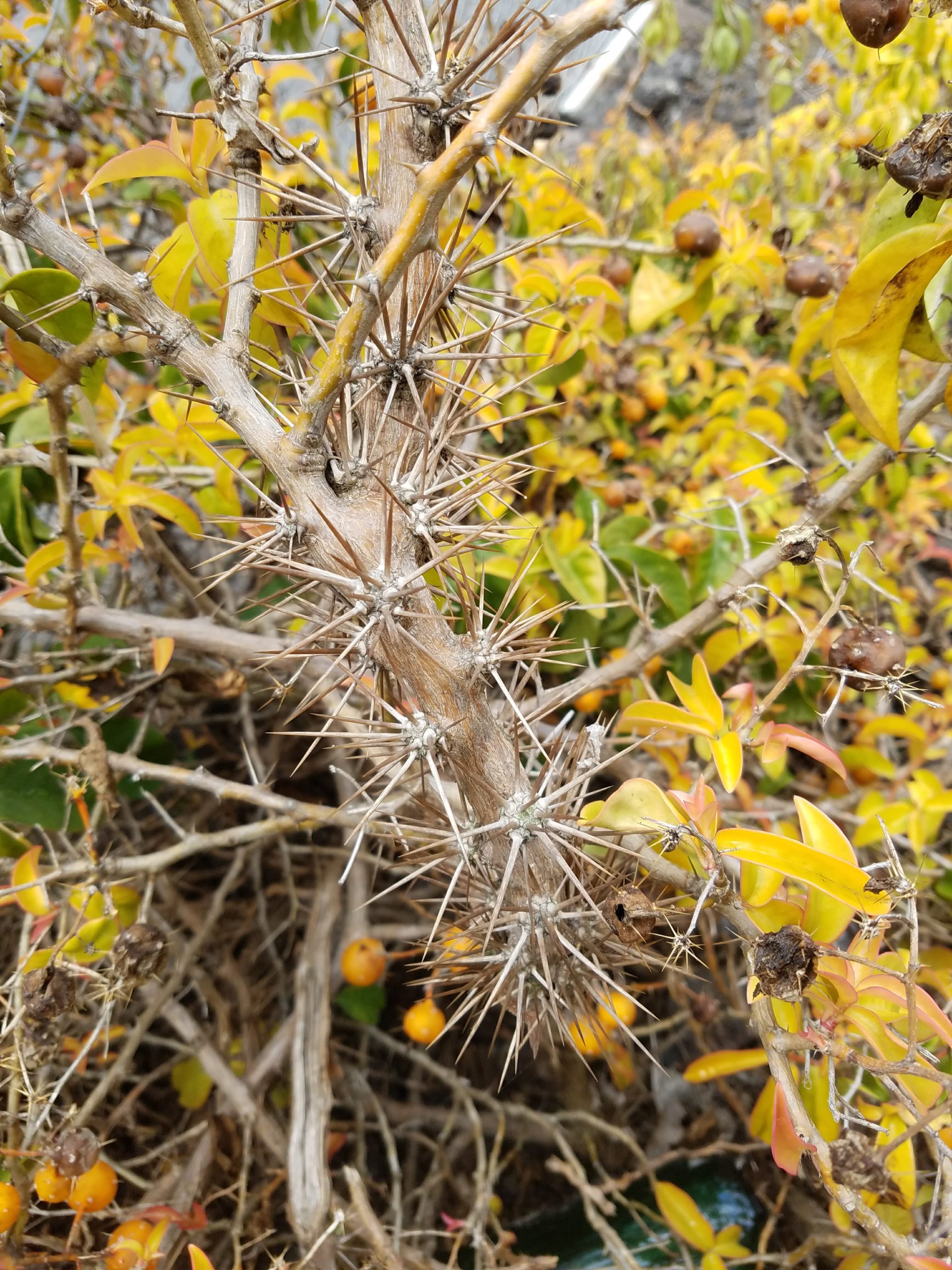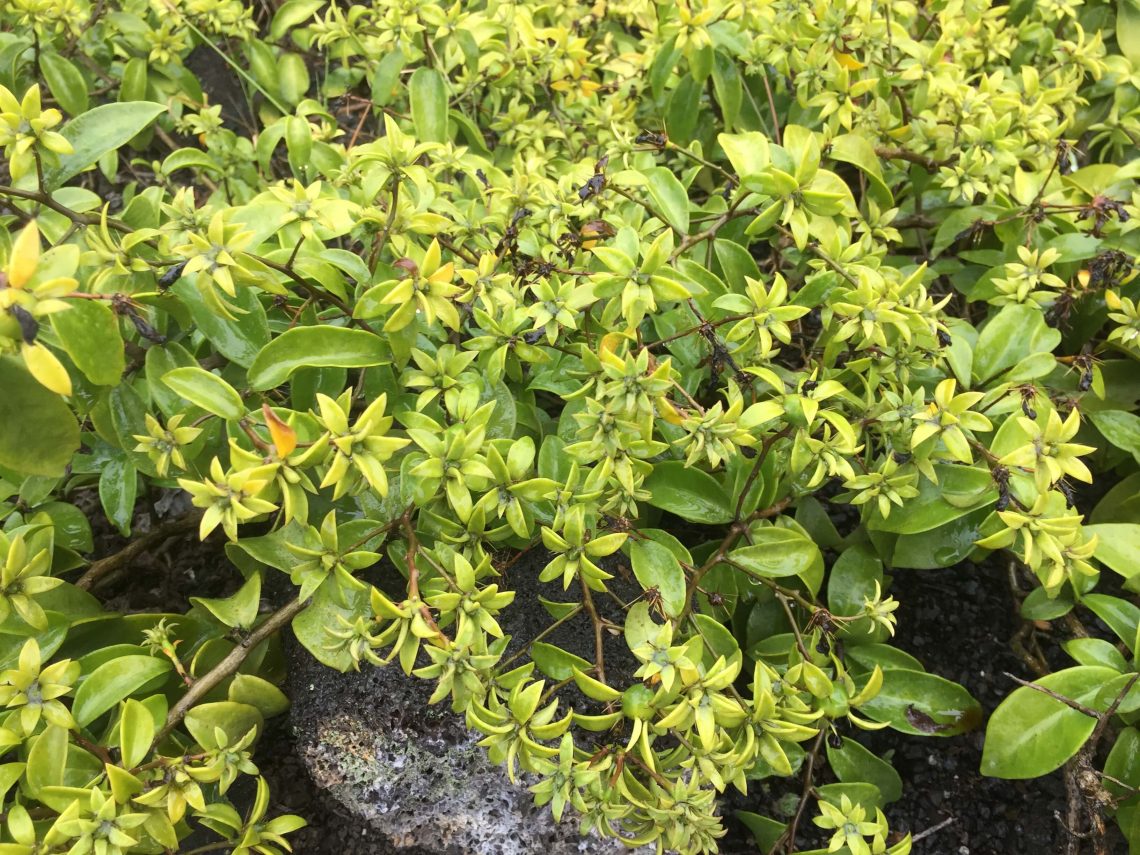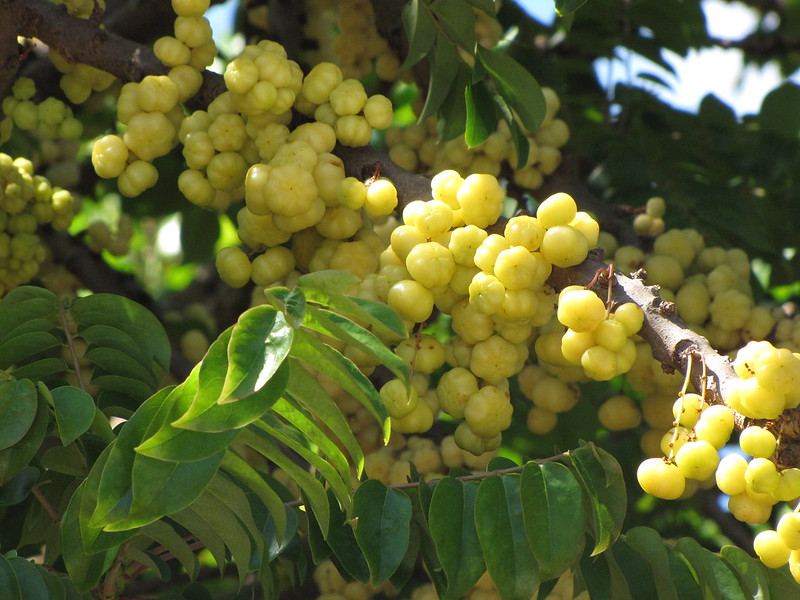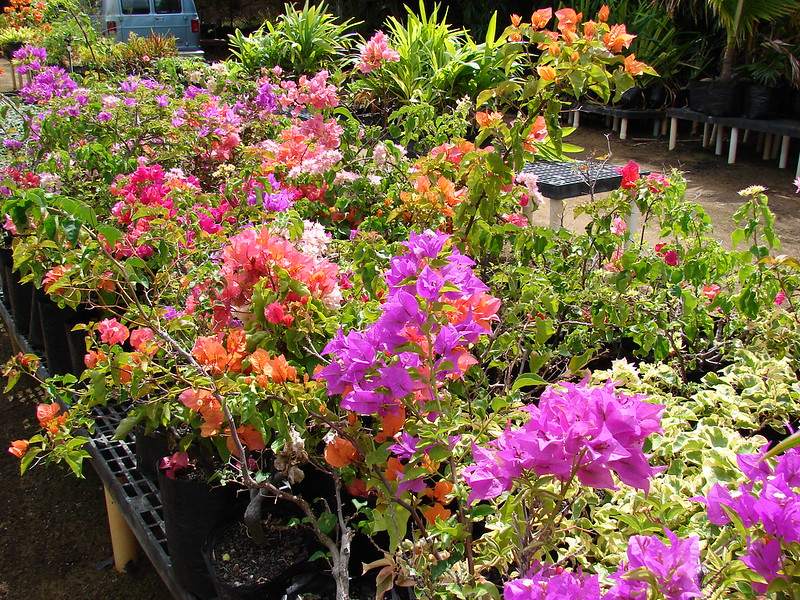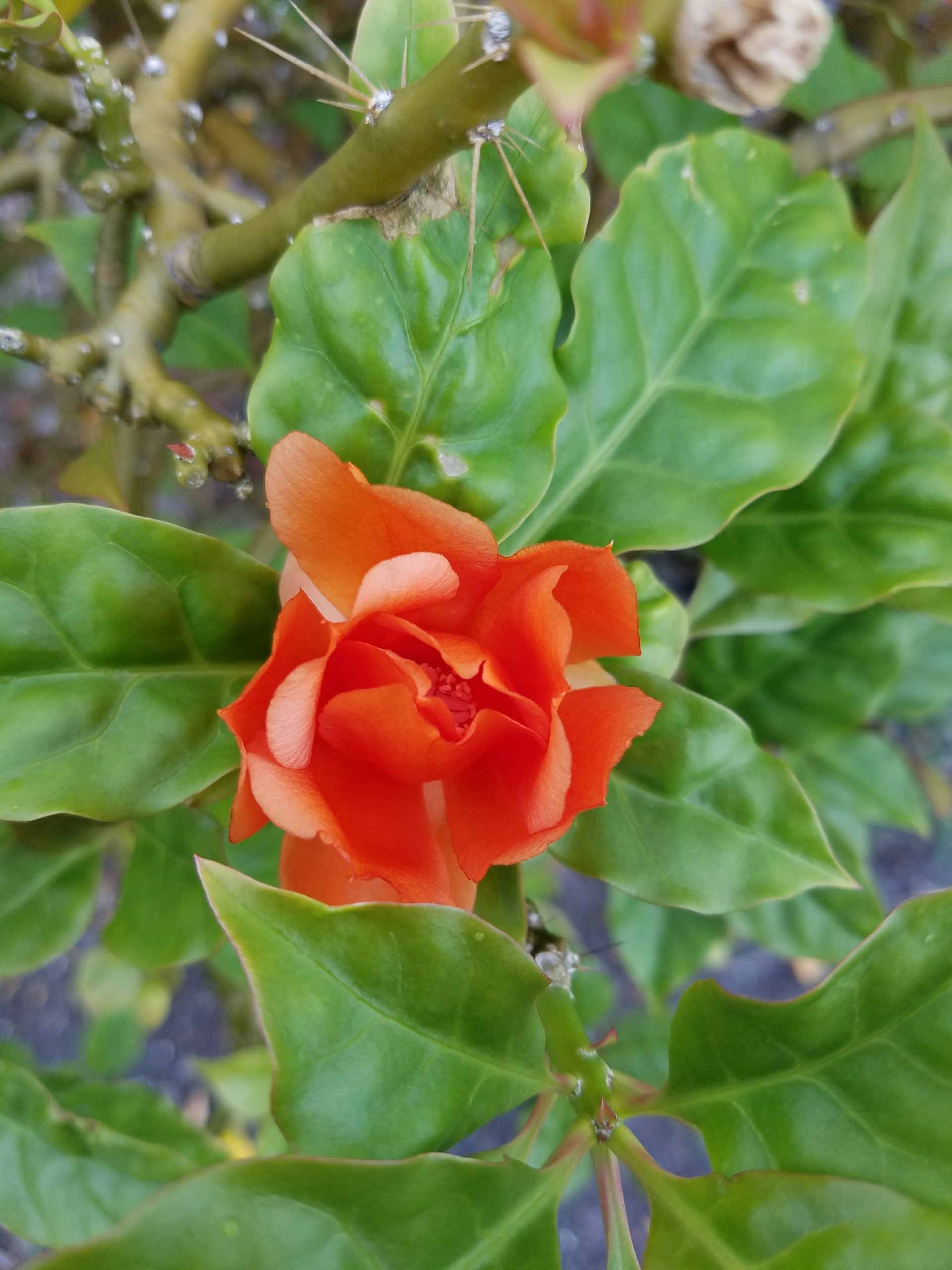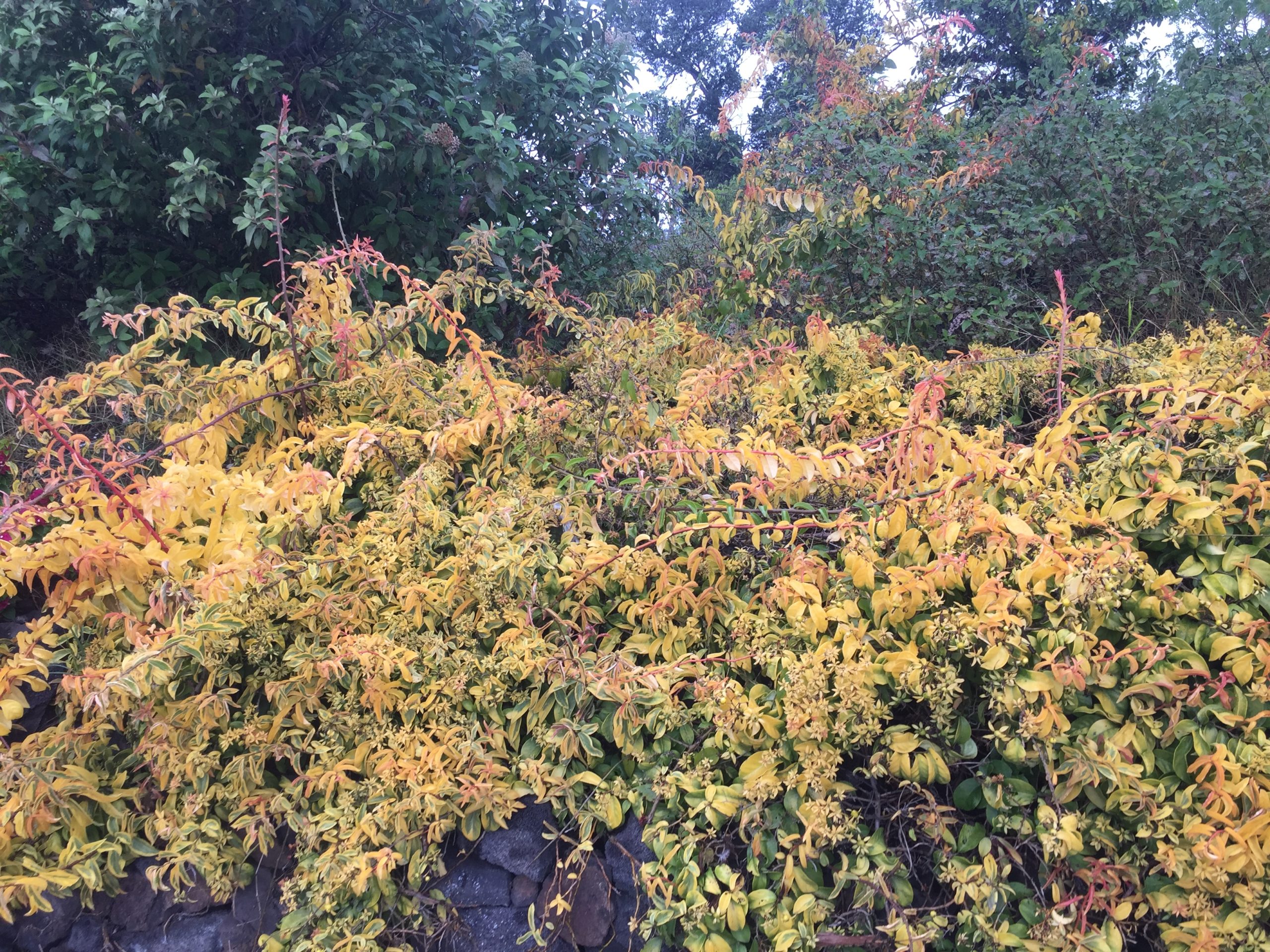
Barbados Gooseberry
DO NOT PLANT: HPWRA Score: 13, High-Risk
Barbados gooseberry is capable of adapting to a variety of environmental conditions. Viable seeds are spread by water, birds (surviving passage through the gut), and humans through the horticultural trade. Spreads rapidly to form dense, thorny, impenetrable thickets effectively smothering other vegetation; gardens have been abandoned due to the overwhelming invasion of Barbados gooseberry. It is listed as a noxious weed in South Africa. Stems and detached leaves stay alive and can form roots months after removal from the parent plant. Extreme thorniness and vigorous growth from plant fragments make control of large infestations difficult.
Barbados gooseberry is a target species for eradication in Hawaii Island and Moloka‛i. If encountered, contact BIISC, or MoMISC for free removal.
Photos: BIISC
Impacts:
- Adapts to a wide variety of environmental conditions
- Spreads rapidly to form dense, thorny, impenetrable thickets effectively smothering other vegetation
- Stems and detached leaves stay alive and can form roots months after removal from the parent plant
Description:
- Climbing, vining cactus with primitive fleshy leaves and long thorns
- The strongly scented flowers (lemon to pungent smell) are white with pink to orange centers
- The fruit is succulent, yellow to orange, and covered in spines with many seeds inside
- Two types of thorns occur on this plant: re-curved catclaw thorns that occur along new stems; and clusters of 1-2″ spines along woodier stems
Grow these instead
Photos (L-R): Forest & Kim Starr, Forest & Kim Starr, BIISC
